by Diana Lehmann
Have any of you taken First Aid training? I am sure many of you have. For those of you who haven’t, let me educate you in one of the first things people are taught in this training–how to recognize an emergency or dangerous situation.
So what does that have to do with Master Naturalists, you ask? Take that training and transfer the idea into the bird world or into the interactions between species in nature. Can you recognize their emergency and observe what happens in that situation? In some instances, it may not be an emergency, but just an alert to a behavior that you would not want to miss. You will be amazed at what you see and what you can learn from simply keeping your mind clear and your eyes open to nature’s little emergencies around you. Read on and I will tell you of some of the occasions where I caught that emergency alert and it paid off big time.
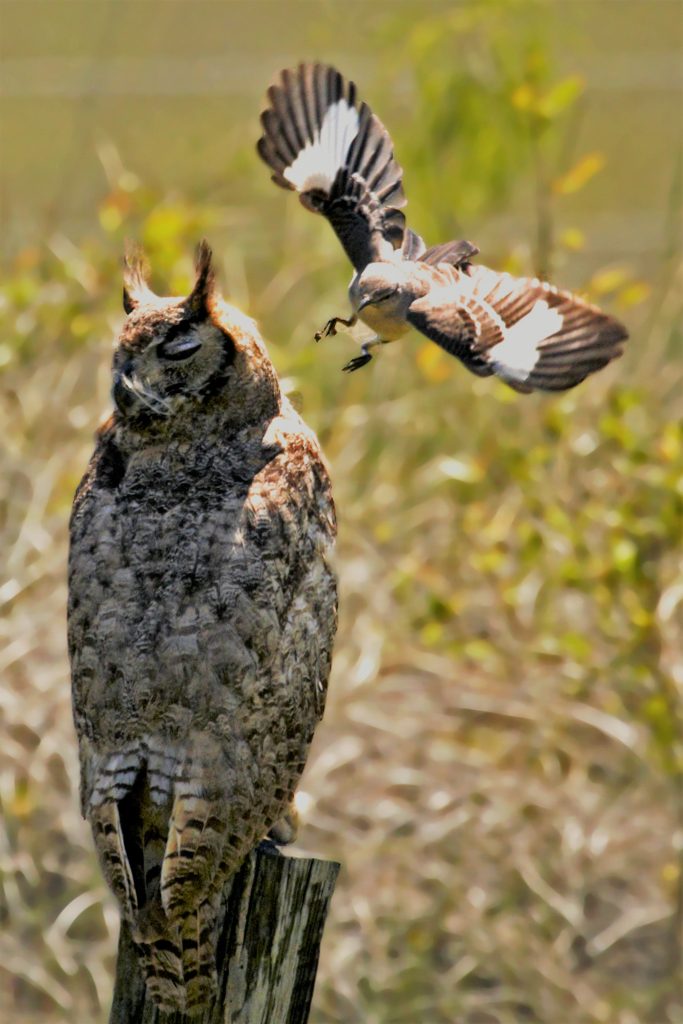
Mockingbirds seem to be real sentinels of the bird world. On three separate occasions, by listening to the incredible raucous they were making and then observing, I caught some amazing photos. I also learned a bit about their parenting skills and observed the behavior of protective parents. Each time the mockingbirds perceived a danger to their nest, theyacted upon it.
The first was a Great Horned Owl that unsuspectingly decided to take a nap too close to their nest. The owl was seemingly unconcerned by all the noise, continuing to nap even with the mockingbirds pestering him and flying at him to drive him away. He finally got tired of the feathers pulling and the dive bombing him and he flew off to continue his nap elsewhere.
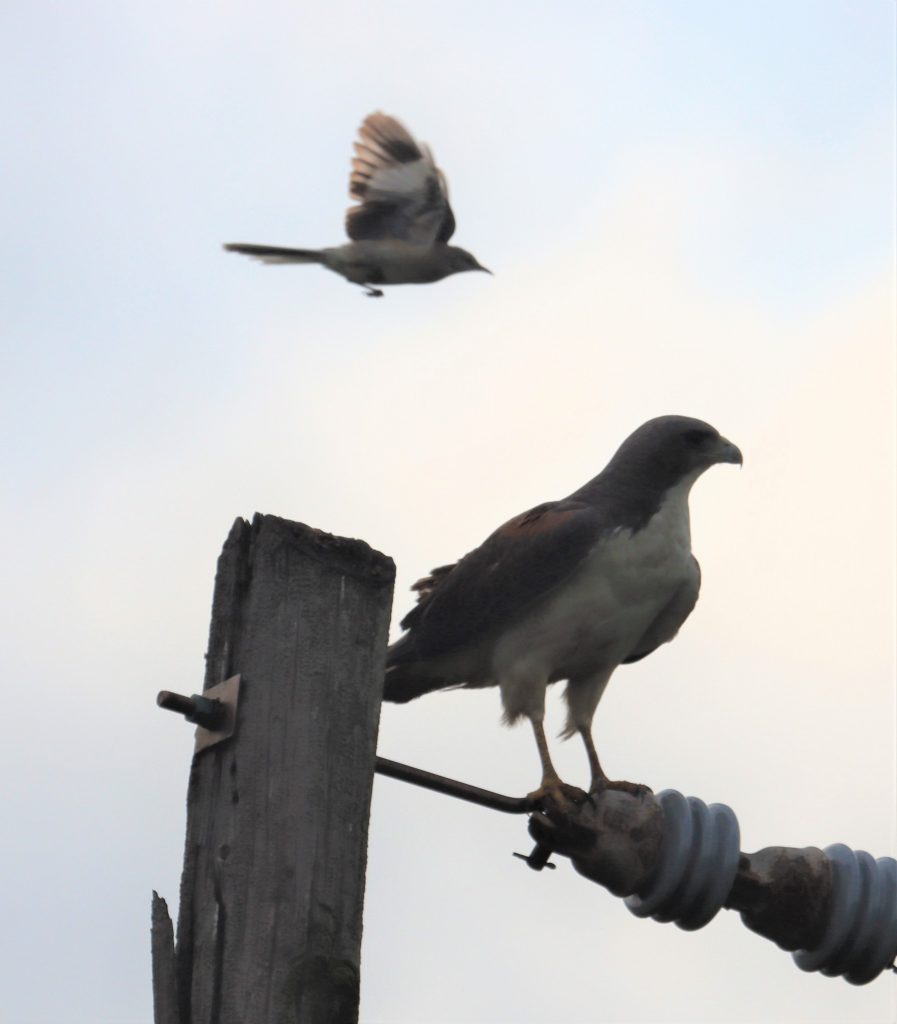
The next alarm was directed at a White-tailed Hawk,a predator that they regarded as a danger to their babies. The hawk was only flying by on the way to one of the favorite perches’ birds have around my house, however, the parent’s thought it was too close for comfort. An emergency alert was sounded and the intimidation tactics began. Had I not been listening and paying attention, I would never have been blessed to see this unique hawk in my backyard.
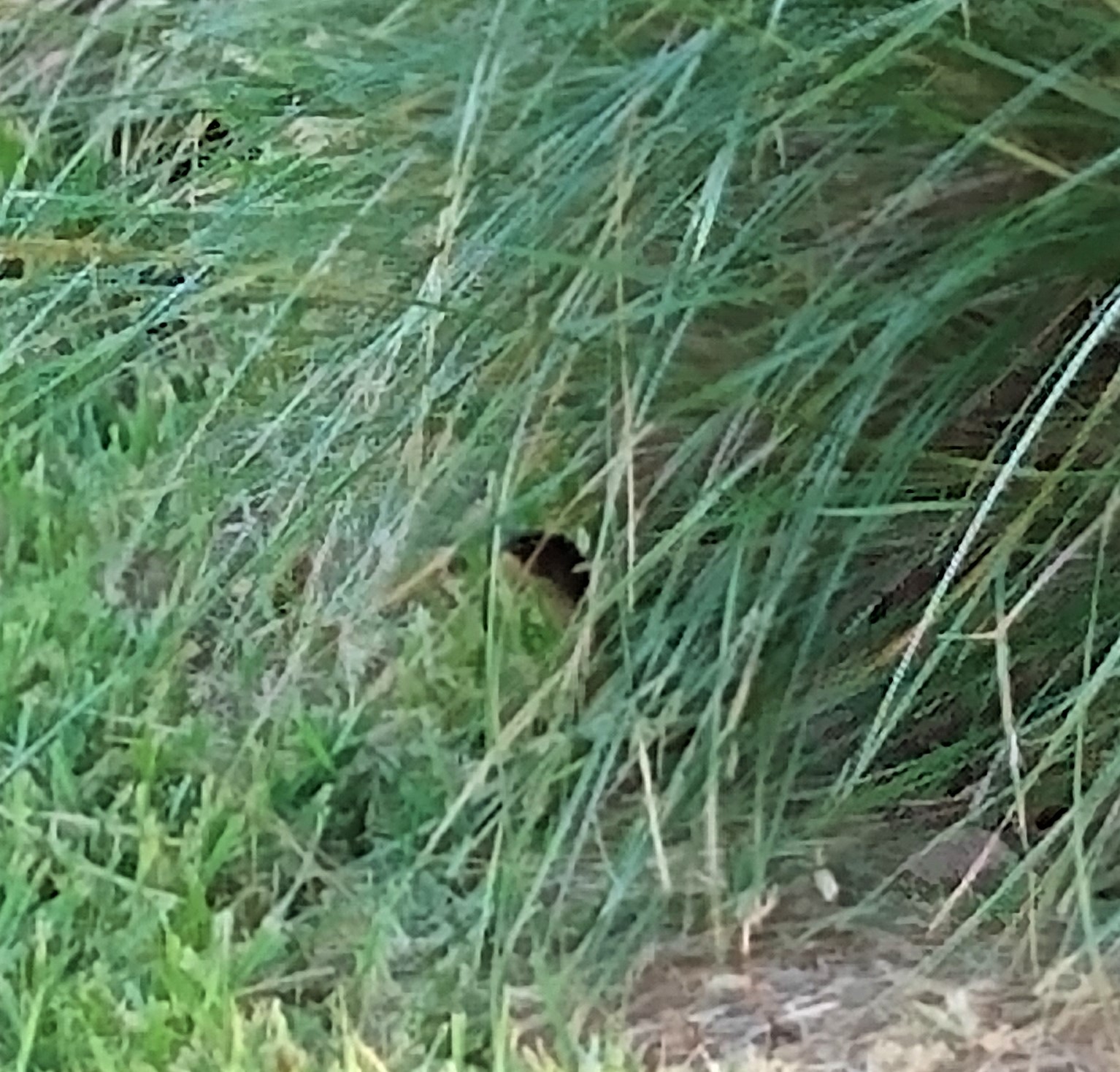
The third three alarm fire was expressed over a different kind of predator. A beautiful, big indigo snake was looking for fish in the canal, but decided to take a bit of a detour. This move was a huge error on his part. Again, the mockingbirds took offense and went on the offensive against this sneaky snake. No matter where he went, the mockingbirds were sounding the alarm and flying down at him. An opportunity finally presented itself and one of the birds flew down to takea big bite of the snake’s tail. This attack precipitated the snake’s escape into the grass where he stayed for a little while but because I was still observing what was transpiring, I eventually saw a little sneaky snake head peek out of the grass. I swear he looked both ways as if looking to see if it was safe to come out. Apparently, he decided to look elsewhere for his supper and he disappeared into the grass.
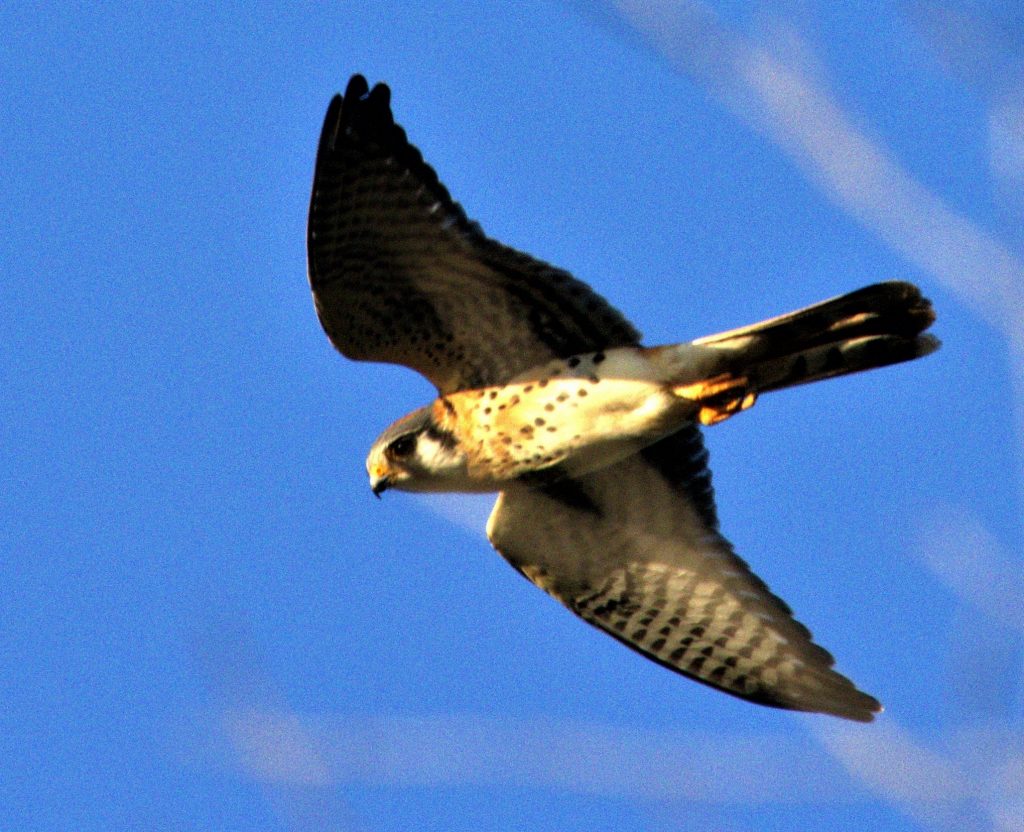
So as not to give mockingbirds a bad rap – let me include this attack as well. Again, the sound of an alert from a bird gave me pause and I looked to see where it was coming from. Low and behold, not one but two Kestrels were very upset with an apparent transgression from a Harris Hawk. Both of the little falcons bickered at the hawk and challenged him on a number of occasions. I had not seen a Kestrel in my back yard since I had moved here, yet there they were. The hawk decided it was better to retreat than to make a stand and flew off. One of the little falcons stayed a bit just to make sure the coast was clear and that is when I was able to take some photos of this beautiful little bird of prey.
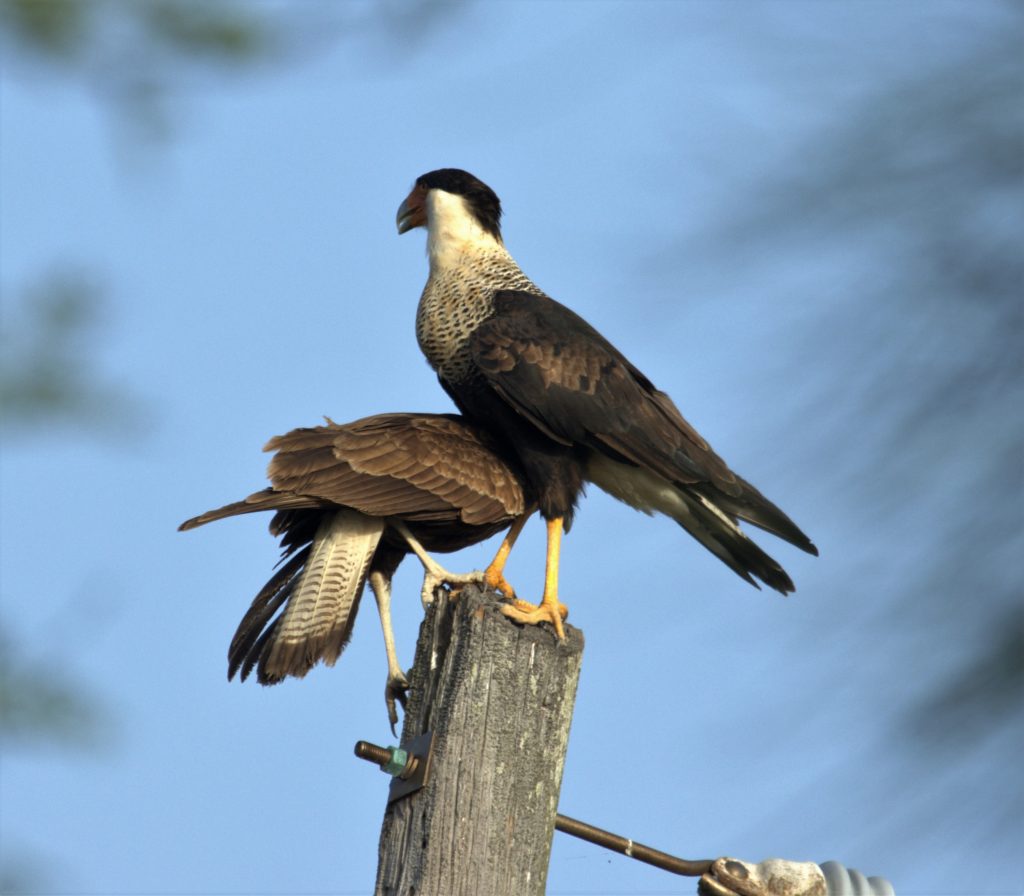
On another occasion, I heard the strangest sound from the telephone pole behind our house. To my amazement, I saw a pair of Caracaras and a juvenile that they were teaching to fly, feed, and fend for himself. The parents flew off but this juvenile wasn’t smart enough to follow yet. He just perched himself on top of the pole and made the strangest distress call I had ever heard from a large bird. He sounded so pathetic, however, mom and dad wereapparently showing tough love that day and never returned for him. You could observe them flying off in the distance looking after him should he have gotten in trouble.
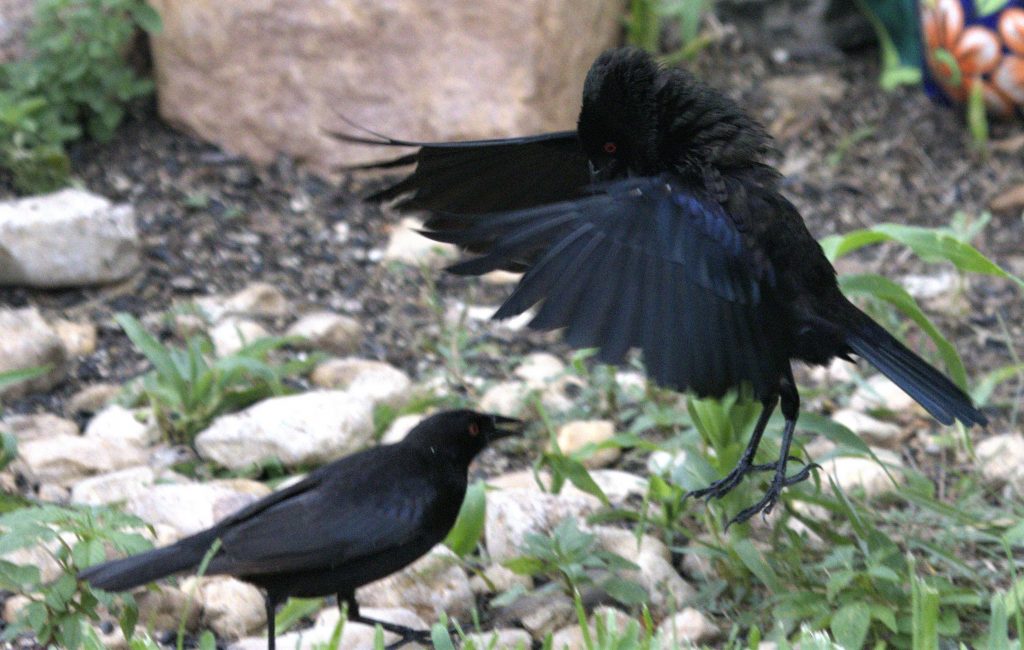
Perhaps the most amazing observation I have witnessed is the mating dance and calls of the Bronzed Cowbird. What a character he is! It was the sound of his wings that caught my attention that day. He was so distracted by the love of his life, I was able to snap a number of photos of him in his mating dance and then when rejection came from the female he was trying to win over. The look of rejection on his little face was downright comical.
These are examples of what happens when you stop – not to smell the roses – but to listen to nature and hear the alerts that are being sounded. The ability to observe and document the interactions between species in nature is a privilege that one should not ignore.
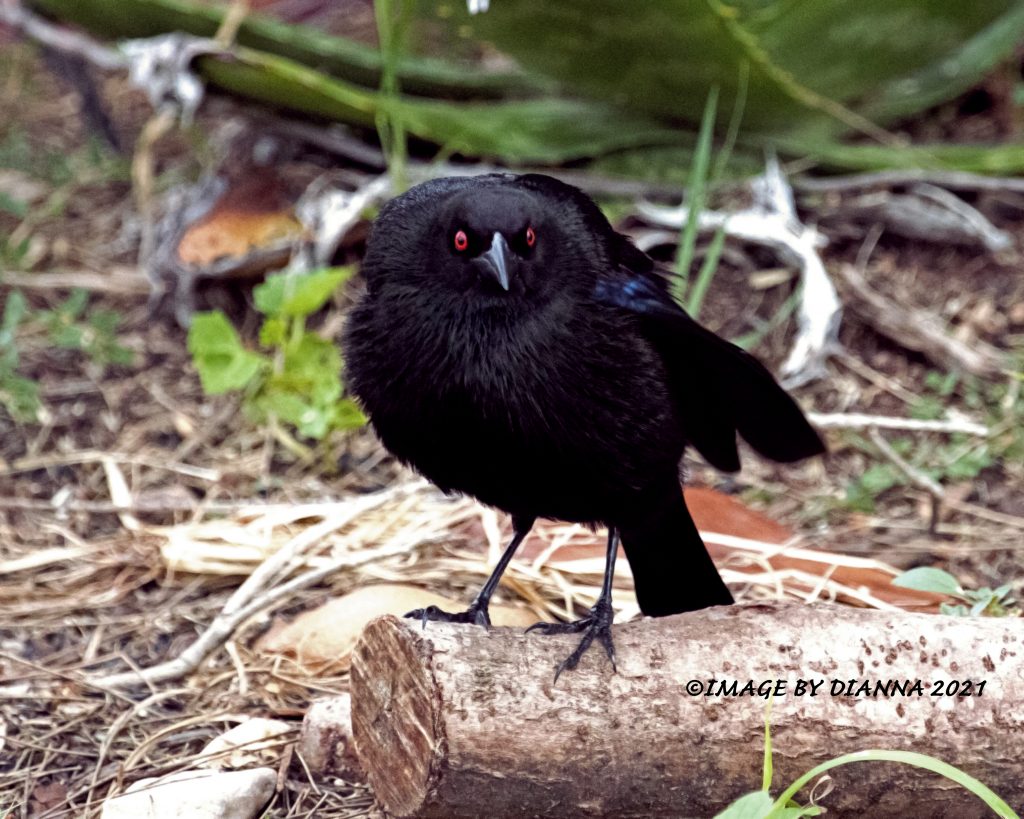
Listen, Look, and Learn. I promise you will be rewarded with amazing sites and sounds of nature that many may miss.
I really appreciate this! It inspires me to slow down and more closely observe the creatures I see in my binoculars or take photos of. Thanks!